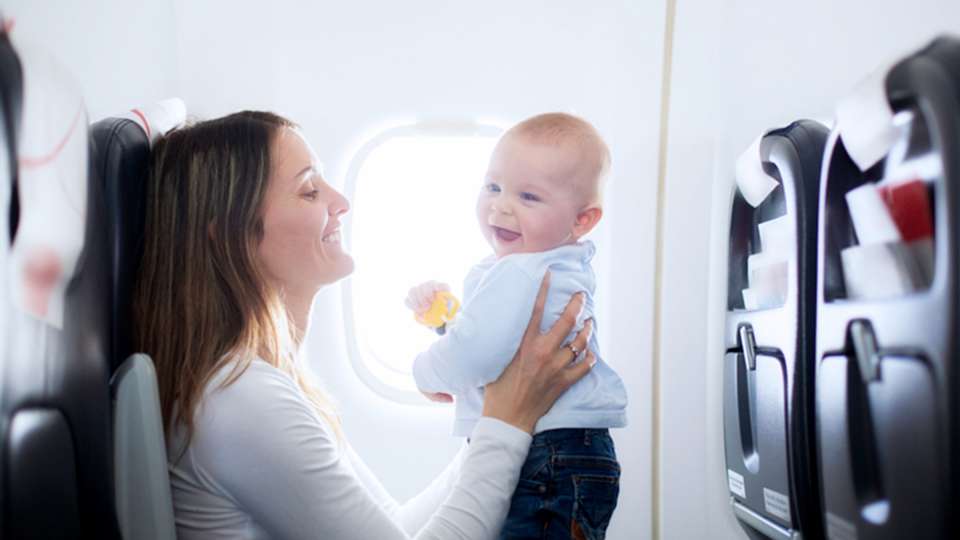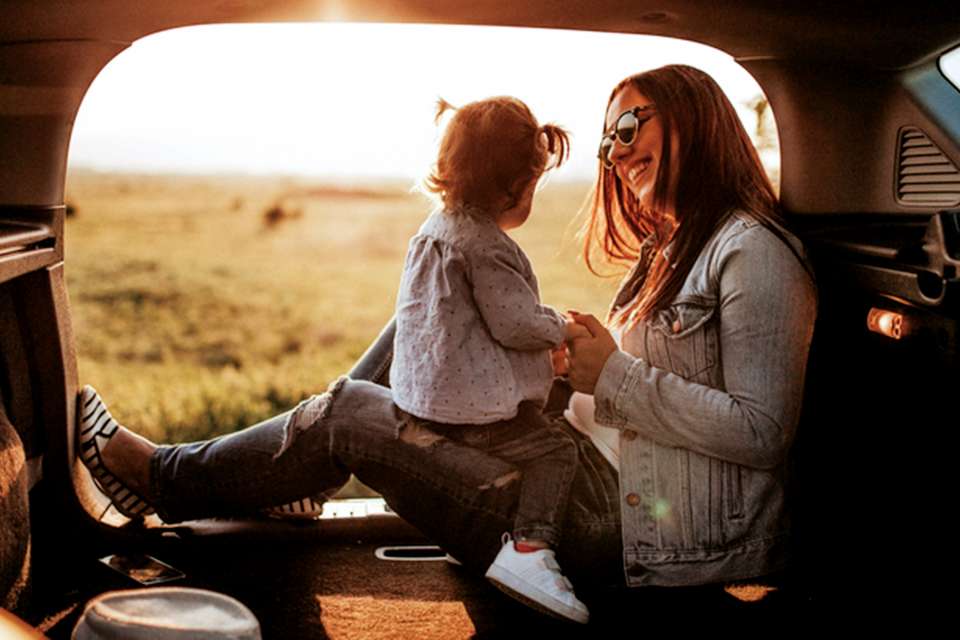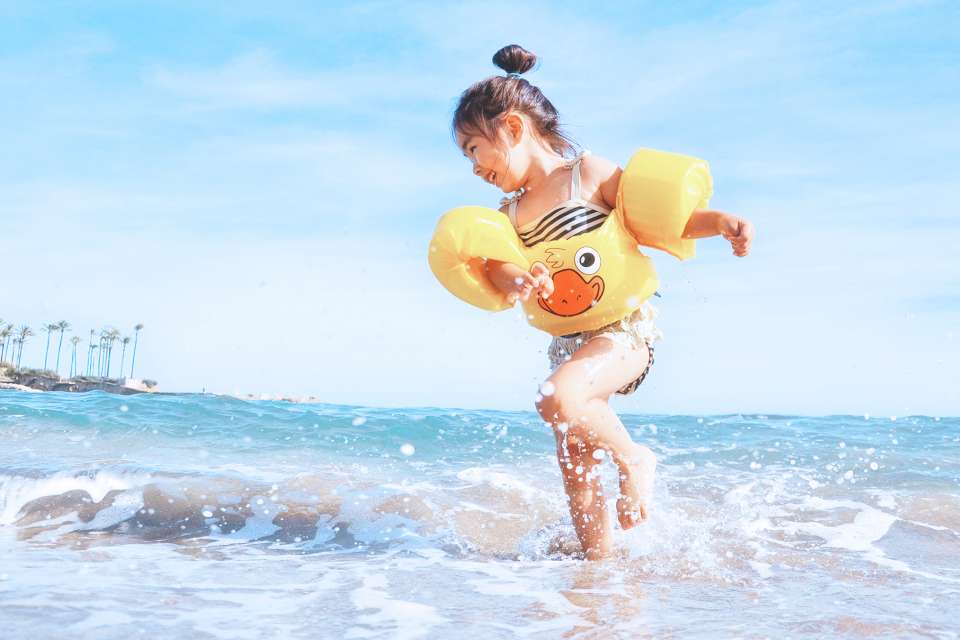
Oh, summer. It’s that time of the year when you load your kids into the car, stockpile the backseat with enough fruit snacks to appease a youth soccer team and embark on your annual family road trip.
But you’ve only been on the road for an hour and one kiddo has already complained about feeling car sick, the other has whined “are we there yet?” no less than 10 times and you’re suddenly grumbling to yourself about whose bright idea this was in the first place. (Oh, right — yours.)
Let’s face it: Whether it’s by car, train, boat or airplane, traveling with kids is stressful. And an unexpected illness or ill-timed mishap — like a massive diaper blowout on an international flight — only makes things worse. Why does it have to be so hard?
It doesn’t, says Dr. Esther K. Chung, a professor of pediatrics and pediatrician at the Pediatric Care Center at University of Washington Medical Center-Roosevelt.
“A lot of times parents are stressed the entire time they travel,” she says. “So let’s go back to why people are traveling in the first place — to have fun and explore.”
To help you do just that, Chung shares her top health, safety and stress-management tips for traveling with kids. She’s not promising a cure-all for diaper blowouts (sorry), but her ideas may just help you put the fun back in your next family vacay.

What to do before you travel
When it comes to traveling, especially abroad, it pays to be prepared. And sometimes that can mean planning ahead a few weeks before your trip.
Make sure you’re up to date on vaccines
An infectious disease is pretty much the worst kind of souvenir. (Trust us on this one.)
Before you travel, especially internationally, make sure everyone in your family is up to date on their immunizations. The Centers for Disease Control and Prevention has a handy travel site that lets you look up different cities and countries to see outbreak warnings and vaccine advisories.
It’s also a good idea to ask your pediatrician or family medicine doctor if they suggest booster doses or additional travel immunizations or medications for specific destinations.
“I recommend all families have a conversation with their pediatrician,” Chung says. “We can help talk you through recommended vaccines and medications for different destinations, especially when traveling to areas where there are high rates of malaria or where there have been recent outbreaks of diseases like measles.”
Research your destination
Do businesses like pharmacies or museums close on specific days at your vacation destination? Will your family be spending most of the trip trekking through a forest or strolling along cobblestone streets? Where can you purchase formula once you get there?
These aren’t things you want to be figuring out when you’ve just arrived with a cranky, jet-lagged brood. Consider cracking open a guidebook or two before you hit the road.
This pre-trip research can also help prevent overpacking. If you know you can buy diapers at the corner store next to your hotel, you won’t feel inclined to stuff an entire suitcase full of them.
Involve your teen in trip planning
Consider any advanced planning you do an added bonus, especially if you have teens who are, let’s say, less than thrilled to be spending so much quality family time together.
“The debate is always if teens are having fun traveling with their families,” Chung says. “They’d much rather be with their peer group or friends, so having them be a part of the decision making of what you’re doing and where you’re going is really important.”
Ask for your teen’s opinion as you look through guidebooks or designate a specific day of the vacation for them to plan. Doing this will give them ownership over your family’s vacation and hopefully cut back on any “this is so boring” quips.
Keep expectations at a minimum
Yes, this might feel a bit Debbie Downer, but Chung says it’s better to start off with a low bar for what you hope to see and do during your vacation.
Kids are unpredictable, and that’s especially true if they’re out of their usual routine. Add on top of that potential jet lag, naps, potty breaks and meltdowns and you get the idea. You’re not going to be able to accomplish everything that you used to when you vacationed sans children — and that’s totally fine.
Instead, focus on a handful of major activities or attractions you absolutely want to visit and work in the less-important stuff accordingly. If things don’t go as planned on your itinerary, that’s OK. You can let the slower pace help you really relax and enjoy your destination and time together as a family.
“Adaptability and patience are the rule,” Chung says.

How to handle getting there
Winding roads and cramped airplane seats don’t exactly make for happy campers, but Chung has a few tips for getting through the travel part of your trip.
Minimize car sickness
While some people are more prone to motion sickness than others, there are preventive measures you can take that can help.
First of all, Chung says, switch off the electronic devices. While you may have loaded a tablet with all sorts of games and movies to keep your kiddo entertained on a long road trip, this can actually add to your child’s feeling of nausea.
“Staring at something that’s close in the car, be it a book or an electronic device, can worsen motion sickness,” she explains. “For older children, they can close their eyes, take a nap or look out the window. For younger children, you can encourage them to play games like ‘I Spy’ or the license plate game.”
Chung adds that being sleep deprived or dehydrated may also contribute to motion sickness, so make sure the entire fam is sipping water ahead of time and gets enough rest the night before. But for the worst cases, talk to your pediatrician about age-appropriate medication that can help.
Make flights more bearable
Remember that whole thing about keeping expectations low? The same applies to flights with your little ones.
“Children can only sit still for so long, and when they cry, they cry loudly,” Chung says. “Accept that it’s not always going to be easy. Instead of making your goal keeping your kids quiet for the people around you, make your goal keeping your children comfortable and happy.”
Pack favorite toys and snacks in a carry-on so you can easily access things when you need them, or surprise your kiddo with a new book or activity to hold their attention en route. You should also walk the aisle together to stretch your legs and offer a change of scenery.
During takeoff and landing, Chung suggests nursing or offering a bottle or pacifier for infants to suck on in order to minimize ear discomfort. For older kids, sucking on hard candy or chewing gum can work just as well to promote swallowing and equalize air pressure in the middle ear.
Dress for success
Your baby’s outfit sure is adorable, but how cute is it when you’re wrangling with dozens of snaps every time you need to change a diaper?
Ease and comfort are the most important things to consider when dressing your kids for travel days.
For long car rides, take children out of jackets, Chung says. This not only ensures they are safely secured in their car seats but also wards off potential overheating. If you’re worried about your kids getting cold, though, try draping a blanket over their lap instead.
During flights, choose layers that your kids can easily shed if they get too warm and opt for comfy materials and loose fits that won’t irritate when sitting for a long time. It’s also a good idea to pack an extra outfit for your baby (and yourself) in case of the aforementioned diaper fiasco.

Ways to keep your travels happy
Once you arrive at your destination, shift your focus to enjoying your time together as a family. Chung offers a few tips to help you truly relax and avoid any travel-related meltdowns.
Ease the jet lag transition
So you’ve just traveled a few time zones away and now your kid is suddenly waking up at 2 a.m. Great.
To ward off — or at least minimize — jet lag, try to avoid daytime napping and encourage your family to go to bed at the appropriate local time. Don’t let your teens have caffeine either, Chung says, as this can interfere with their sleep.
For younger kids, try to mirror their bedtime routine at home to give them familiar sleep time cues. It can help to bring favorite stuffed animals and blankets, too.
Bring strollers or carriers
It might seem like a lot of gear to haul around, but a lightweight stroller or backpack carrier is a safety essential for families with young children, Chung says.
“Young children and toddlers might dart out into a busy street,” she explains. “And when parents are traveling around, they’re often distracted or looking up and not down at their children to see if they wander off.”
Keeping little ones secure in a stroller or backpack carrier is also helpful when you plan on walking a lot. Your kids can rest their tired feet, and you won’t have to worry about them being able to keep up.
Build downtime into your schedule
Speaking of rest, it’s crucial to schedule naps and relaxation time into your vacation itinerary every day, Chung says.
“Youth need a little private time,” she notes. “Teens, especially, need time to go back to their room and catch up on social media or have some alone time.”
This can be an hour or two for your littlest ones to nap or simply a short break in your hotel room after lunch. Either way, use it as an opportunity for your entire family to recharge before the second part of the day.
Keep healthy snacks and water on hand
Ice cream as a special treat is awesome. Ice cream all day, every day? Not so much.
“It’s really important to bring snacks,” Chung says. “And just like you and I wouldn’t be very happy if we were having a lot of junk food, you want to offer healthy snacks that your kids will actually enjoy.”
Think popcorn, pretzels or portable fruit like grapes or blueberries. On a similar note, be sure to keep a water bottle on hand that you can refill throughout your day so your kids can stay hydrated.
Pack an emergency kit
Kid or adult, an unexpected illness or allergic reaction can put a damper on anyone’s vacation.
Plan for the worst-case scenario, Chung says, and stock common medications and gear in an emergency kit. She suggests including items like hand wipes, hand sanitizer, sunscreen, first aid supplies and over-the-counter medicine for pain, allergies and upset stomachs.
“For parents of toddlers, the other thing to keep in mind is that they’re constantly touching things,” Chung adds. “It’s just a good idea to have wipes and hand sanitizer available in your kit so you can clean their hands periodically.”
Try to minimize stress
Chung’s final tip might seem easier said than done, but it’s important to keep stress levels — both yours and your kids’ — in mind when traveling.
“When they’re outside of their routine, kids — like adults — are going to feel more stressed,” Chung says. “They’re going to need support from you.”
Keep your travel goal all about enjoying time with your family and exploring your destination together. Don’t worry so much about ticking things off an itinerary. Instead, embrace the quiet moments together and the experience.
After all, isn’t that what a family vacation is all about?
Editor’s note: This article has been updated to reflect Northwest Hospital is now UW Medical Center – Northwest, a second campus of the University of Washington Medical Center in Seattle.

 Healthy ideas for your inbox
Healthy ideas for your inbox





